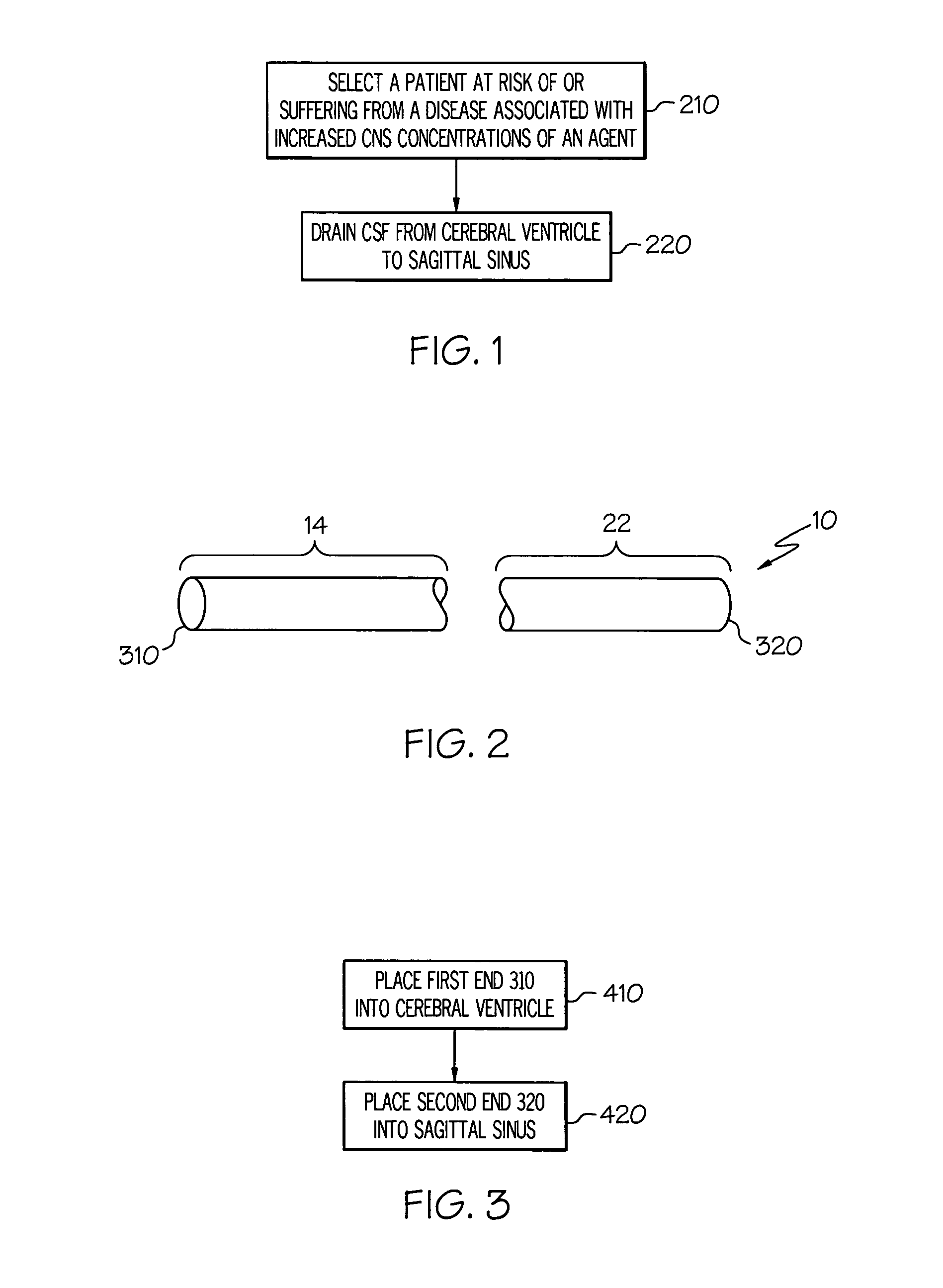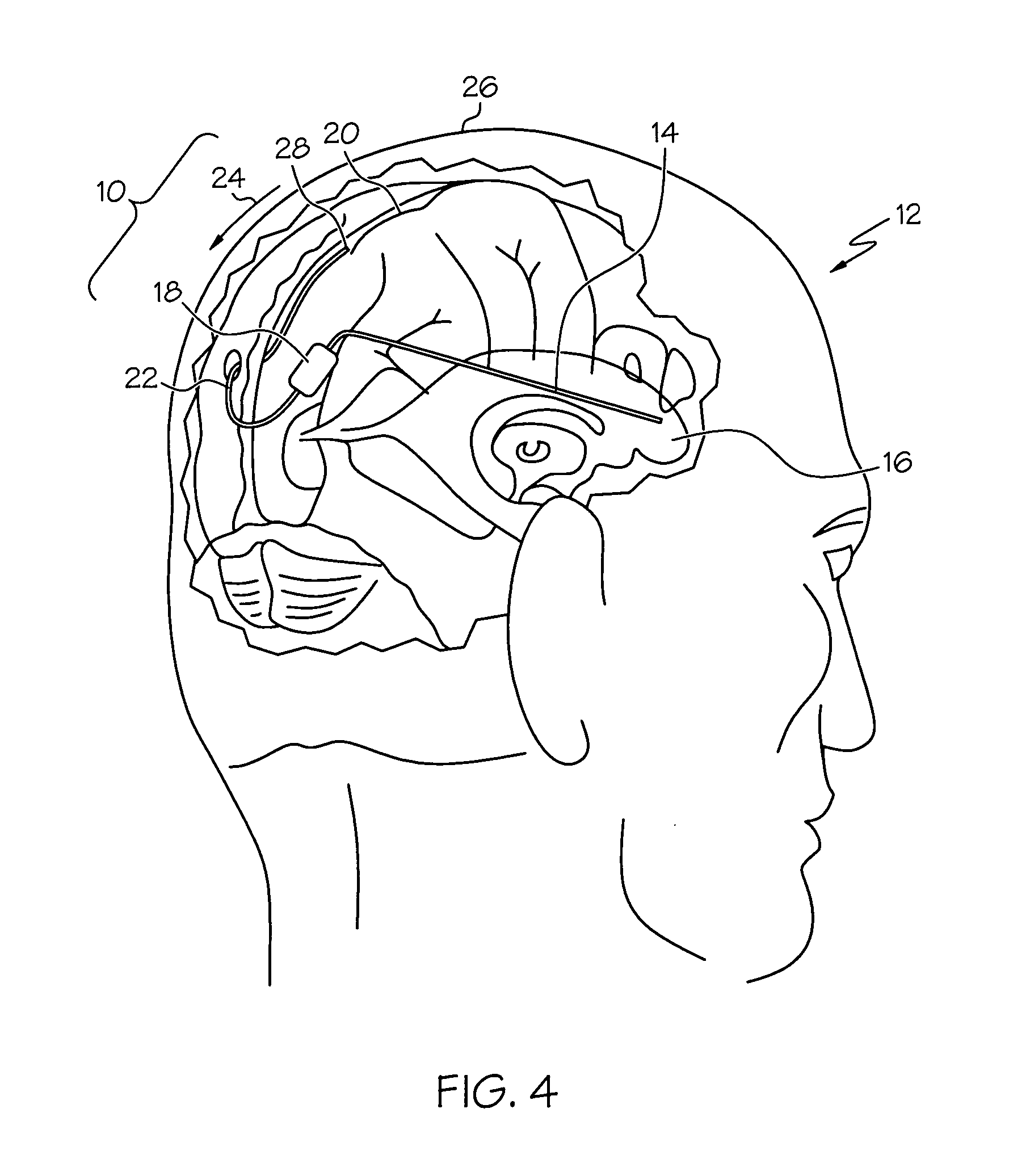Ventriculo-sinus shunting for disease treatment
a technology of cerebrospinal fluid and ventriculo-sinus, which is applied in the direction of suction devices, intravenous devices, wound drains, etc., can solve the problems of increased cost and failure, prone to malfunction of devices whose components are subject to wear and tear, and require difficult judgment, etc., to achieve increased reliability, increased concentration, and inflexible csf
- Summary
- Abstract
- Description
- Claims
- Application Information
AI Technical Summary
Benefits of technology
Problems solved by technology
Method used
Image
Examples
Embodiment Construction
[0027] In the following descriptions, reference is made to the accompanying drawings that form a part hereof, and in which are shown by way of illustration of several specific embodiments of the invention. It is to be understood that other embodiments of the present invention are contemplated and may be made without departing from the scope or spirit of the present invention. The following detailed description, therefore, is not to be taken in a limiting sense.
[0028] While not intending to be bound by any particular theory, the present invention in various embodiments is based, in part, on a premise that devices and methods that use of the body's natural control processes to remove CSF from a cerebral ventricle for treating a disease associated with increased CNS concentrations of a deleterious and / or undesirable agent are advantageous over devices and methods that provide active mechanisms to remove CSF or use flow restrictors to control the rate at which CSF may be removed.
[0029...
PUM
 Login to View More
Login to View More Abstract
Description
Claims
Application Information
 Login to View More
Login to View More - R&D
- Intellectual Property
- Life Sciences
- Materials
- Tech Scout
- Unparalleled Data Quality
- Higher Quality Content
- 60% Fewer Hallucinations
Browse by: Latest US Patents, China's latest patents, Technical Efficacy Thesaurus, Application Domain, Technology Topic, Popular Technical Reports.
© 2025 PatSnap. All rights reserved.Legal|Privacy policy|Modern Slavery Act Transparency Statement|Sitemap|About US| Contact US: help@patsnap.com



